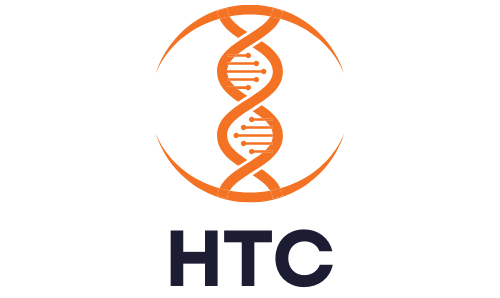Investment Opportunities in HealthTech for Rural Healthcare
Rural healthcare has long been a significant challenge across the globe. In many rural areas, healthcare access is limited by geographic barriers, a shortage of healthcare professionals, and insufficient infrastructure. The consequences are often dire, with rural populations experiencing higher rates of chronic diseases, lower life expectancy, and limited access to preventive and emergency care. In this context, HealthTech offers promising solutions to bridge the gap and enhance healthcare delivery in rural settings.
The importance of HealthTech in addressing rural healthcare needs cannot be overstated. Innovations such as telemedicine, mobile health applications, and artificial intelligence (AI) have the potential to revolutionize how healthcare is provided in remote areas. These technologies can improve access, reduce costs, and enhance the quality of care. This blog aims to explore the investment opportunities in HealthTech for rural healthcare, highlighting the potential for significant returns while making a meaningful impact on underserved populations.
Rural healthcare refers to the medical services and infrastructure available to populations residing in non-urban areas. These areas are characterized by low population density, geographic isolation, and often limited access to healthcare facilities. The scope of rural healthcare includes primary care, emergency services, chronic disease management, preventive care, and health education.
Key Challenges Faced by Rural Healthcare Systems
Rural healthcare systems face several key challenges:
- Geographic Barriers: The vast distances between patients and healthcare facilities make access to care difficult and time-consuming.
- Shortage of Healthcare Professionals: Rural areas often struggle to attract and retain qualified healthcare providers, leading to a lack of specialized care.
- Infrastructure Deficiencies: Inadequate healthcare infrastructure, including poorly equipped clinics and hospitals, hampers the delivery of quality care.
- Economic Constraints: Rural populations typically have lower income levels and higher rates of uninsured individuals, limiting their ability to afford healthcare.
- Health Disparities: Rural residents experience higher rates of chronic conditions such as diabetes, heart disease, and mental health issues, exacerbated by limited access to care.
Examples of HealthTech Applications in Rural Healthcare
HealthTech has the potential to address many of these challenges through innovative applications:
- Telemedicine: Virtual consultations enable patients to connect with healthcare providers remotely, reducing the need for travel and expanding access to specialized care.
- Mobile Health (mHealth): Mobile applications and devices can monitor patients' health conditions, provide health education, and facilitate communication between patients and providers.
- AI and Machine Learning: AI can assist in diagnosing conditions, predicting outbreaks, and personalizing treatment plans, making healthcare more efficient and effective.
- Remote Monitoring: Wearable devices and remote monitoring tools allow continuous tracking of patients' health metrics, enabling timely interventions and reducing hospital admissions
HealthTech Solutions for Rural Healthcare
HealthTech innovations are transforming the landscape of rural healthcare. Here are some key technologies making a significant impact:
- Telemedicine: Telemedicine platforms enable real-time video consultations, allowing patients to receive medical advice and treatment without the need to travel. These platforms often include features like electronic health records (EHRs), appointment scheduling, and remote diagnostics.
- Mobile Health (mHealth): mHealth solutions include mobile apps for health tracking, patient education, and medication reminders. These apps can be particularly beneficial in managing chronic conditions and promoting healthy lifestyles.
- Artificial Intelligence (AI): AI algorithms can analyze large datasets to identify patterns and predict health outcomes. AI-powered diagnostic tools can assist healthcare providers in making accurate diagnoses and developing personalized treatment plans.
- Wearable Devices: Wearables such as smartwatches and fitness trackers can monitor vital signs, physical activity, and sleep patterns. These devices provide valuable data for healthcare providers to monitor patients' health remotely.
- Remote Monitoring Tools: Devices like glucose monitors, blood pressure cuffs, and pulse oximeters can transmit data to healthcare providers in real-time, enabling continuous monitoring and timely interventions.
Examples of Technologies Improving Rural Healthcare Access and Quality
- Telemedicine Platforms: Platforms like Teladoc and Amwell offer comprehensive telehealth services, connecting patients in rural areas with specialists in urban centers. These platforms have been instrumental in providing access to mental health services, dermatology consultations, and chronic disease management.
- mHealth Applications: Apps like MySugr for diabetes management and HeartCare for cardiovascular health provide patients with tools to monitor their conditions, access educational resources, and communicate with their healthcare providers.
- AI Diagnostic Tools: AI-powered tools like IBM Watson Health and PathAI assist in diagnosing diseases by analyzing medical images and patient data. These tools can enhance diagnostic accuracy and speed, particularly in areas with limited access to specialists.
- Wearable Health Devices: Devices like the Fitbit and Apple Watch monitor physical activity, heart rate, and sleep patterns. These devices can alert users to potential health issues and share data with healthcare providers for continuous monitoring.
- Remote Monitoring Systems: Systems like BioBeat and Tytocare provide remote monitoring solutions for chronic conditions, enabling healthcare providers to track patients' health metrics and intervene when necessary.
Case Studies of Successful HealthTech Solutions
- Project ECHO: Project ECHO (Extension for Community Healthcare Outcomes) uses telemedicine to connect rural healthcare providers with specialists at academic medical centers. This model has been successful in managing chronic diseases like hepatitis C and diabetes, improving patient outcomes through specialist support and education.
- Babylon Health: Babylon Health offers an AI-powered telehealth platform that provides remote consultations, health assessments, and personalized health plans. The platform has been effective in rural areas of Africa and Asia, where access to healthcare is limited.
- Ping An Good Doctor: This Chinese telemedicine platform offers online consultations, health management services, and medication delivery. It has been particularly successful in reaching rural populations, providing access to healthcare services that were previously unavailable.
Benefits of HealthTech in Rural Healthcare
One of the most significant benefits of HealthTech in rural healthcare is improved access to medical services. Telemedicine, for instance, allows patients to consult with doctors and specialists without the need to travel long distances. This is particularly important for rural populations who may face transportation challenges and limited availability of local healthcare providers. By using telehealth platforms, patients can receive timely medical advice, diagnosis, and treatment from the comfort of their homes
.
Enhanced Patient Outcomes and Quality of Care
HealthTech innovations have the potential to enhance patient outcomes and the overall quality of care in rural areas. Remote monitoring tools and wearable devices enable continuous tracking of patients' health metrics, allowing for early detection of potential issues and timely interventions. AI-powered diagnostic tools improve the accuracy and speed of diagnoses, ensuring that patients receive appropriate treatments promptly. Additionally, mHealth applications provide patients with valuable information and resources to manage their conditions effectively.
Cost Savings and Resource Optimization
Implementing HealthTech solutions in rural healthcare can lead to significant cost savings and resource optimization. Telemedicine reduces the need for physical infrastructure and travel expenses, while remote monitoring tools decrease the frequency of hospital visits and admissions. AI-driven technologies streamline administrative tasks and enhance clinical workflows, allowing healthcare providers to focus on patient care. These efficiencies result in reduced healthcare costs and better allocation of resources.
Challenges and Risks
While HealthTech offers numerous benefits, there are also challenges and risks associated with its adoption in rural healthcare settings. Some of these challenges include:
- Technology Infrastructure: Rural areas may lack the necessary infrastructure, such as high-speed internet and reliable electricity, to support HealthTech solutions.
- Digital Literacy: Patients and healthcare providers in rural areas may have limited experience with digital technologies, making it challenging to implement and use HealthTech effectively.
- Data Security and Privacy: The use of digital health platforms raises concerns about data security and patient privacy. Ensuring that patient information is protected from breaches and unauthorized access is crucial.
- Regulatory and Compliance Hurdles: HealthTech solutions must comply with various regulations and standards, which can be complex and time-consuming to navigate.
Strategies for Overcoming These Challenges
To address these challenges, several strategies can be implemented:
- Infrastructure Development: Investing in the development of technology infrastructure in rural areas is essential. This includes improving internet connectivity and ensuring reliable access to electricity.
- Training and Education: Providing training and education for both patients and healthcare providers can help increase digital literacy and promote the effective use of HealthTech solutions.
- Data Security Measures: Implementing robust data security measures, such as encryption and secure authentication, can help protect patient information and ensure compliance with regulations.
- Regulatory Support: Advocating for supportive regulatory frameworks and policies can facilitate the adoption of HealthTech solutions in rural healthcare.
Investment Strategies in Rural Healthcare HealthTech
Investors interested in HealthTech for rural healthcare should focus on identifying companies and technologies with the potential to address the unique challenges of rural settings. Key areas to consider include telemedicine platforms, remote monitoring tools, AI diagnostic solutions, and mHealth applications. Companies that have demonstrated success in urban and suburban markets may also have the potential to expand into rural areas with the right support and adaptation.
When evaluating investment opportunities in HealthTech for rural healthcare, several factors should be considered:
- Market Demand: Assess the demand for HealthTech solutions in rural areas, considering factors such as population size, healthcare access, and prevalent health conditions.
- Technology Adaptability: Evaluate the adaptability of the technology to rural settings, including infrastructure requirements and ease of use for patients and healthcare providers.
- Regulatory Compliance: Ensure that the technology complies with relevant regulations and standards, and assess the company's ability to navigate regulatory hurdles.
- Scalability: Consider the scalability of the technology and its potential to be implemented in multiple rural locations.
Long-Term vs. Short-Term Investment Strategies
Investors should also consider their investment horizon when entering the HealthTech market for rural healthcare:
- Long-Term Investments: Long-term investments may involve supporting early-stage startups and emerging technologies with significant growth potential. These investments require patience and a willingness to support the company's development over several years.
- Short-Term Investments: Short-term investments may focus on companies that are already established and have a proven track record of success. These investments can provide quicker returns but may offer less growth potential compared to early-stage ventures.
Notable Labs: Driving HealthTech Innovations for Rural Healthcare
Notable Labs is at the forefront of leveraging precision medicine to address the unique challenges of rural healthcare. By integrating advanced genetic and molecular analyses into standard healthcare practices, Notable Labs collaborates with insurers and healthcare providers to pioneer innovative HealthTech solutions that are accessible and affordable for rural populations. Their commitment to evidence-based practices and robust clinical data supports the development of reimbursement policies that recognize the value and cost-effectiveness of precision medicine. As a leader in the field, Notable Labs exemplifies the potential for HealthTech to transform rural healthcare, improving patient outcomes and setting a new standard for integrating cutting-edge medical advancements into everyday healthcare. Their work paves the way for a future where personalized healthcare is accessible to all, ensuring that each patient, regardless of location, receives the most effective and individualized treatment possible.
Future Trends and Innovations
Several emerging trends and future directions are shaping the HealthTech landscape for rural healthcare:
- Integration of AI and Machine Learning: AI and machine learning are being increasingly integrated into HealthTech solutions, enhancing diagnostic accuracy, predicting health outcomes, and personalizing treatment plans.
- Expansion of Telehealth Services: Telehealth services are expanding beyond primary care to include specialized services such as mental health, dermatology, and chronic disease management.
- Development of Wearable Health Devices: Wearable health devices are becoming more sophisticated, with capabilities to monitor a wide range of health metrics and provide real-time data to healthcare providers.
- Blockchain for Health Data Security: Blockchain technology is being explored for its potential to enhance health data security and interoperability, addressing concerns about data privacy and sharing.
The Impact of Technological Advancements on Rural Healthcare
Technological advancements are transforming rural healthcare by making it more accessible, efficient, and patient-centered. Innovations such as AI, telemedicine, and wearable devices are breaking down geographic barriers, enabling continuous health monitoring, and facilitating early intervention. These advancements are not only improving health outcomes for rural populations but also making healthcare more cost-effective and sustainable.
Predictions for the Next Decade in Rural Healthcare HealthTech
Over the next decade, several key developments are expected in rural healthcare HealthTech:
- Widespread Adoption of Telemedicine: Telemedicine is expected to become a standard component of rural healthcare, providing patients with access to a wide range of medical services without the need for travel.
- Increased Use of AI in Diagnostics and Treatment: AI will play a critical role in diagnosing and treating health conditions, providing healthcare providers with powerful tools to enhance patient care.
- Growth of Remote Monitoring and Wearable Devices: Remote monitoring and wearable devices will become more prevalent, enabling continuous health monitoring and proactive management of chronic conditions.
- Advancements in Mobile Health Applications: mHealth applications will continue to evolve, offering more comprehensive and personalized health management solutions for rural populations.
Conclusion
In conclusion, investing in HealthTech solutions for rural healthcare presents a unique opportunity to address the significant challenges faced by rural populations while achieving substantial returns on investment. HealthTech innovations such as telemedicine, mobile health, AI, and wearable devices have the potential to revolutionize rural healthcare by improving access, enhancing patient outcomes, and reducing costs. However, investors must carefully consider the unique challenges and risks associated with rural healthcare and adopt strategies that support long-term growth and sustainability. The future of rural healthcare HealthTech is promising, with emerging trends and technological advancements poised to transform the healthcare landscape. By supporting and investing in innovative HealthTech solutions, stakeholders can play a crucial role in improving the health and well-being of rural communities, ensuring that all individuals have access to high-quality healthcare regardless of their geographic location.










